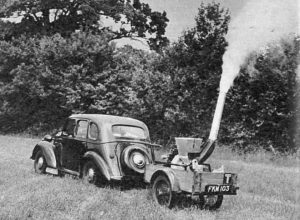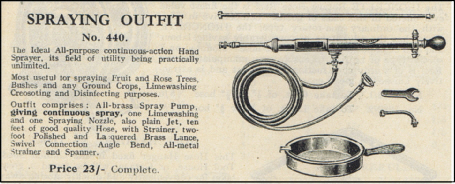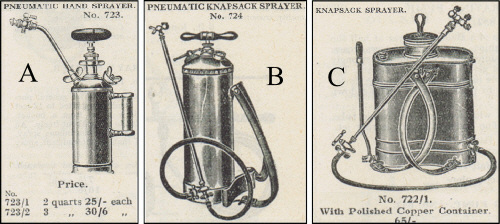1951 Exhibitions
July 21, 2020 in Articles, Machinery

Pickfords transporting a locomotive to the Festival of Britain
A vast array of exhibitors, events, crafts and craftsmen took part. The picture shows Pickfords negotiating the streets of St. Albans as they transported a locomotive from Lancashire to London as an exhibit for the Festival.
Find out more about the Festival on Wikipedia: Wikipedia Link
The Council of Industrial Design compiled a list of items for display at the Festival of Britain, these included furniture with a preoccupation of plywood and brightly coloured fabrics. Household items, artwork, science, agriculture, industry and machinery right up to locomotives as we have seen. But I cannot find if any of the well known manufacturers of horticultural, grounds or garden machinery took part. Does anyone know?
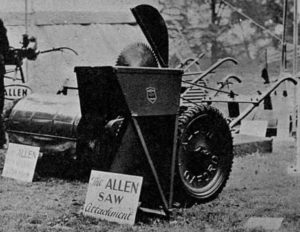
Allen Scythe Saw Bench
We can see that in 1951 a large number of interesting items were being displayed. These included the latest attachment for the Allen Scythe. It was a saw bench with a 16″ diameter blade capable of cutting to 6″, it has an adjustable guard. Other equipment were a power sprayer, electric generator and a front-mounted rotary brush which can be seen in the image behind the saw bench.

Ransomes-Sisis Aero Main
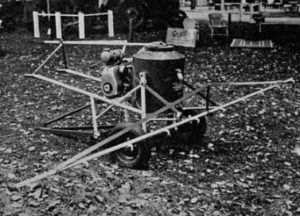
1hp Dorman Sprayer

Gravely Estate Power Unit
Two intriguing photographs to finish. The first is the plant protection stand at the Groundsmans Exhibition. It was housed in a caravan which was described as ‘gleaming in chromium plate and perspex’ which sums up the modern and bright future that may lay ahead. The second photograph is a general view, showing the stands of T. Parker & Sons and John Allen & Sons. I wonder what all the machinery on display was? Can you name the tractor on the right-hand side?
If anyone knows any machinery that was at the Festival of Britain in 1951 then we’d be pleased to hear.

The Plant Protection stand at the Groundsmans Exhibition. A caravan in chromium plate and perspex.

T. Parker & Sons and John Allen & Sons stands, 1951.
Note: Images/media are used for research/illustration purposes for non-profit only with copyright held by respective publishers where and as applicable.






